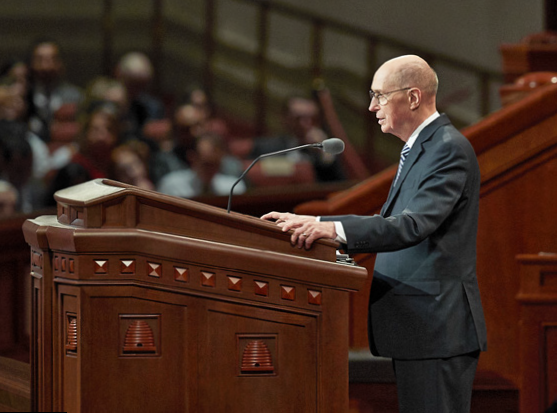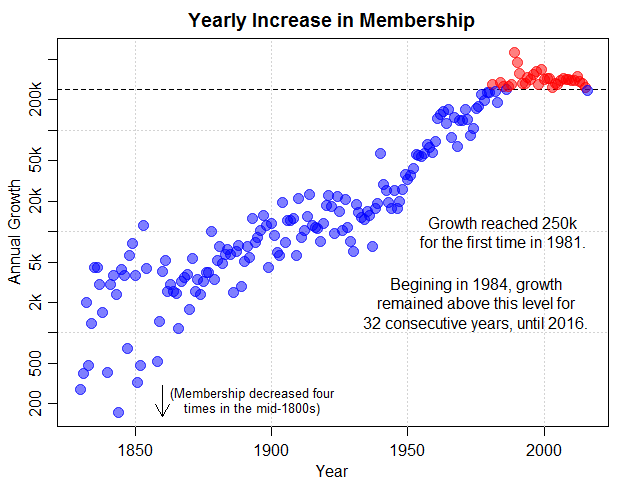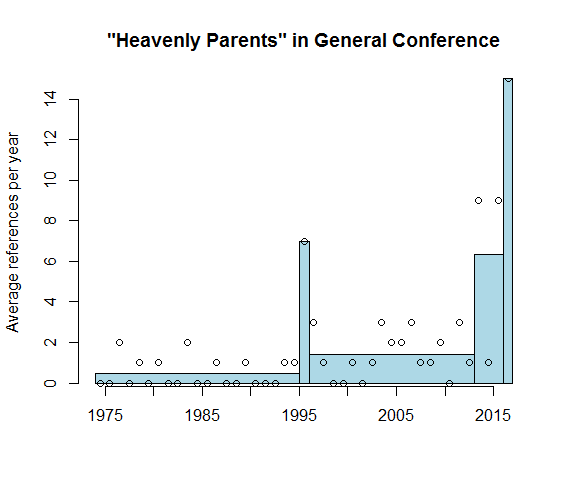Funniest number: The statistical report gives Church membership as 16,663,663. So five sixes, and two threes that can be added together to yield a sixth six! Talk about victories for Satan!
Best musical number: “Arise, O God, and Shine,” Saturday morning
Worst musical number: “God Loved Us, So He Sent His Son,” Priesthood. I just found this slow and uninteresting.
Highest-tempo musical number: “Guide Us, O Thou Great Jehovah,” Saturday afternoon. I didn’t actually measure tempos, but this one seemed quite fast.
Best choir outfits: Korean girls singing “I Love to See the Temple,” Sunday morning
Longest talk: D. Todd Christofferson, “Why the Covenant Path,” 2179 words
Shortest talk: Russell M. Nelson, “Welcome Message,” 507 words
Longest prayer (“I should have been giving a talk.”): Arnulfo Valenzuela, Sunday morning benediction, 144 seconds
Shortest prayer (“Let’s move this thing along!”): Carl B. Cook, Saturday afternoon invocation, 54 seconds
Best title: Dale G. Renlund, “Infuriating Unfairness”
Emphatic titles: Ahmad S. Corbitt (“You Can Gather Israel!”) and S. Gifford Nielsen (“This Is Our Time!”) gave consecutive talks with exclamation marks on the titles. Henry B. Eyring (“Bless in His Name”) unfortunately didn’t continue the trend.
Missed opportunity title: Choi Hong (Sam) Wong titled his talk “They Cannot Prevail; We Cannot Fall,” when with just one letter change and very little meaning change, he could have made it rhyme: “They Cannot Prevail; We Cannot Fail.”
1955 called and wants its title back: Dallin H. Oaks, “Defending Our Divinely Inspired Constitution”
Best visual aid: Dallin H. Oaks, amid a bunch of stock photos of Jesus that we’ve all seen a thousand times, showed a photo of a family that’s delightfully imperfect, with one person not looking at the camera at all, and a baby who looks like they might be about to bust into a fuss.

Best stories:
- Gary E. Stevenson told of how Church members driven out of Missouri in 1838 were cared for so kindly by residents of Quincy, Illinois. I appreciate this as a counterweight to the prevalent narrative of how early Church members were constantly persecuted.
- Gerrit W. Gong told of a young woman selling ice cream cones out of a pushcart who he witnessed having her cart upended and her cones smashed by an angry customer. The scale of her pain might not have been great in the grand scheme of things, but I appreciated how he told the story with no resolution and no happy ending, which I feel like very much goes against the typical Mormon grain of wrapping stories up with a bow. He concluded:
I can still see the young woman on her knees in the street, trying to save broken wafer pieces, tears of anguish streaming down her face. Her image haunts me, a reminder of the unkindness, uncaring, misunderstanding we too often inflict on each other.
- Jorge T. Becerra told of a dream Brigham Young had where he encountered Joseph Smith driving a big herd of sheep and goats that were varied in size and appearance. Brigham asked Joseph what he was going to do with such an unruly flock, and Joseph seemed unconcerned and said “they are all good in their places.” Brigham took it to mean the Church should gather a variety of people. I really appreciated Joseph’s line, particularly given that the most familiar discussion of sheep and goats in the scriptures is of Jesus separating them. This seems like an unusually hands-off approach to differences between people in the Church.

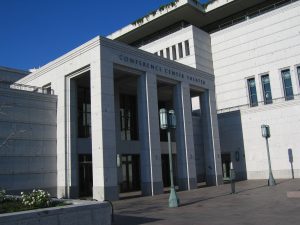
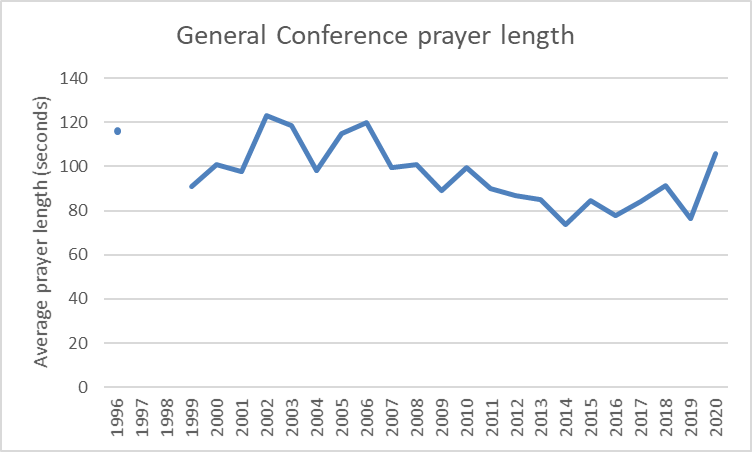




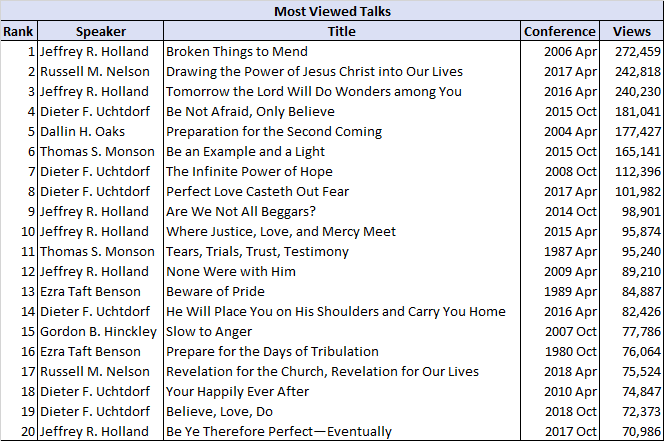
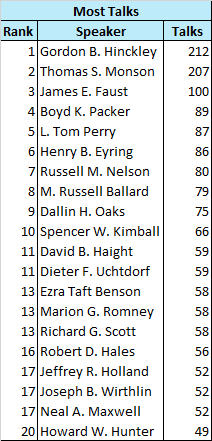
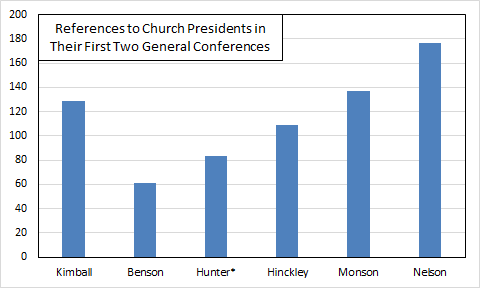
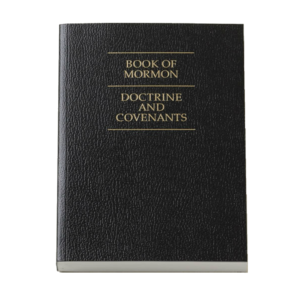
 In a stunning rebuke of the murmurnacle, President Nelson will announce that not only will the three hour block not be shortened to two hours, it will actually be lengthened to four hours. Existing meetings and classes will not be changed in length. The extra hour will be used for a mandatory meeting where all ward members (including primary and nursery-aged children) sit in council and discuss the importance of Defending the Family. Meetinghouses used by three wards will follow the 8-12/10-2/12-4 schedule. Fifth Sundays will be celebrated with a special five-hour block, with each meeting lengthened by 25%.
In a stunning rebuke of the murmurnacle, President Nelson will announce that not only will the three hour block not be shortened to two hours, it will actually be lengthened to four hours. Existing meetings and classes will not be changed in length. The extra hour will be used for a mandatory meeting where all ward members (including primary and nursery-aged children) sit in council and discuss the importance of Defending the Family. Meetinghouses used by three wards will follow the 8-12/10-2/12-4 schedule. Fifth Sundays will be celebrated with a special five-hour block, with each meeting lengthened by 25%.